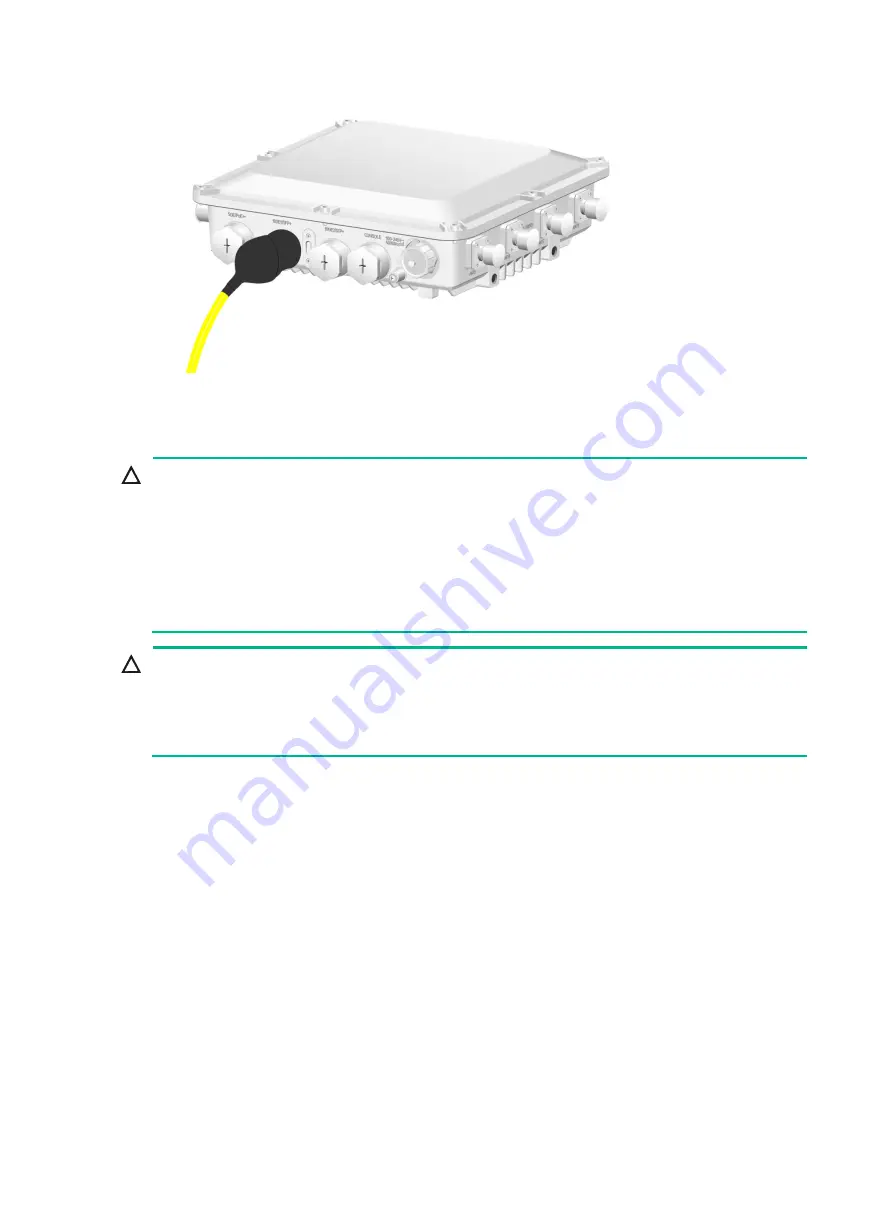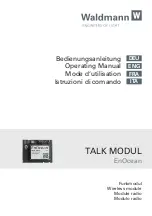
2-15
Figure2-29 Wrapping the weatherproof connector
Connecting an RF cable
CAUTION:
To avoid device damage or bodily injury caused by excessive radiation exposure, make sure the
antennas and RF cables comply with local regulations. As a best practice, purchase H3C
recommended antennas and RF cables. To enure correct operatison of the AP, make sure the
antennas and RF cables meet the following basic requirements:
•
The VSWR for RF cables is less than or equal to 1.4.
•
The VSWR for antennas is less than or equal to 1.8.
•
The maximum gain can ensure that the AP's EIRP complies with local regulations.
CAUTION:
•
Make sure the AP is grounded reliably.
•
VSWR tests are required for RF load joints and other cable-connected components made on
site. The cable reflection attenuation of the assembled cable joints must meet the equipment
and engineering design requirements in the working frequency band.
In
2.4G&5G
mode, the AP provides the following radios:
•
Radio 1
—Operates at 5 GHz in 4×4 MIMO mode and uses antenna ports ANT1 to ANT4.
•
Radio 2
—Operates at 2.4 GHz and uses antenna ports ANT5 to ANT8.
In 5G mode, the AP provides the following radios:
•
Radio 1
—Operates at 5 GHz and uses antenna ports ANT1 to ANT4.
•
Radio 2
—Operates at 5 GHz and uses antenna ports ANT5 to ANT8.
You can connect an RF cable or antenna to an antenna connector. The connection procedure is the
same. The following procedure connects an RF cable to an antenna connector.
To connect an RF cable:
1.
Remove the weatherproof plug from the antenna connector on the AP.
2.
Connect a lightning arrester to the antenna connector.
3.
Connect the RF cable to the lightning arrester.
4.
Wrap each connection with weatherproof tape. Smooth the tape edges to ensure full adhesion.
Summary of Contents for WA6528X-E
Page 7: ...ii...
















































